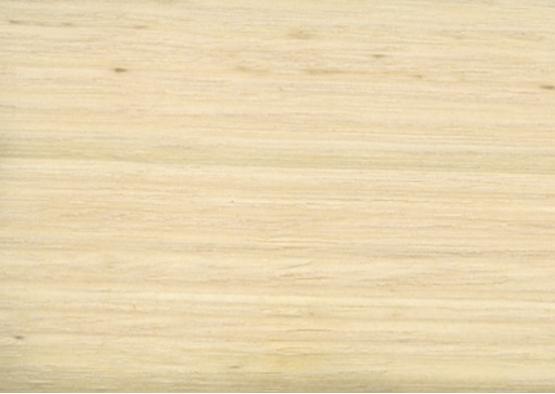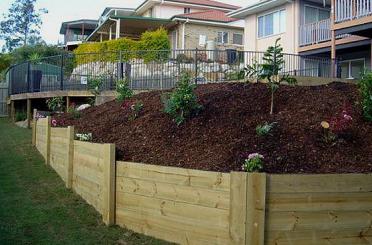Mountain grey gum is a hard and moderately durable timber species. It is suitable for a range of applications including general construction, flooring, paneling and sleepers.
Monkey Gum, Spotted Mountain Gum, Small-fruited Mountain Gum, Mountain Blue Gum, Eucalyptus cypellocarpa (formerly E. goniocalyx)
Eucalyptus cypellocarpa

Mountain grey gum is a medium to tall tree growing up to 65 metres in height on favourable sites. It occurs in the Grampian Ranges and around Cape Otway in Victoria, and on the coastal fall of the southern tablelands of New South Wales.
The wood of this species is a pale brown colour, often with pink or yellow tinges. Sapwood is generally paler, but not always visually distinct from the heartwood. Grain is typically straight and close, with occasional interlocking. Texture is moderately coarse and even, and gum veins are common.
Mountain grey gum timber is moderately durable. Untreated heartwood, although lacking termite-resistance, has an aboveground life expectancy of between 15 and 40 years. Untreated sapwood is susceptible to Lyctid borer attack.
Given the timber’s hardness, mountain grey gum is reasonably easy to work by hand or machine.
Common uses of mountain grey gum timber include bridge and wharf construction, general construction applications such as building framework, wheelwright work, sleepers, paneling and flooring. The timber has potential for furniture, joinery and veneer applications, although care is required in the selection of timber suitably free of gum veins.
Shrinkage
| Very Low | Low | Medium | High | Very High | |
|---|---|---|---|---|---|

|

|
||||
Tangential : |
11.90%
|
||||
Radial : |
5.30%
|
||||
Unit Movement Tangential: |
0.39%
|
||||
Unit Movement Radial: |
0.27%
|
Strength Group

Very High |
High |
Reasonably High |
Medium High |
Medium |
Reasonably Low |
Low |
Very Low |
||
Unseasoned: |
S1 |
S2 |
S3 |
S4 |
S5 |
S6 |
S7 |
S8 |
|
|---|---|---|---|---|---|---|---|---|---|
 |
|||||||||
Seasoned: |
SD1 |
SD2 |
SD3 |
SD4 |
SD5 |
SD6 |
SD7 |
SD8 |
|
 |
Stress Grade

| Structural No. 1 |
Structural No. 2 |
Structural No. 3 |
Structural No. 4 |
Structural No. 5 |
|
Unseasoned: |
F17 |
F14 |
F11 |
F8 |
F7 |
Seasoned: |
F34 |
F27 |
F22 |
F17 |
F14 |
Density per Standard

Seasoned: |
870kg/m3
|
|---|---|
Unseasoned: |
1150kg/m3
|
Joint Group

Very High |
High |
Reasonably High |
Medium |
Low |
Very Low |
|
Unseasoned: |
J1 |
J2 |
J3 |
J4 |
J5 |
J6 |
|---|---|---|---|---|---|---|
 |
||||||
Seasoned: |
JD1 |
JD2 |
JD3 |
JD4 |
JD5 |
JD6 |
 |
Colour

| White, yellow, pale straw to light brown | Pink to pink brown | Light to dark red | Brown, chocolate, mottled or streaky | |
 |
||||
Mechanical Properties
Modulus of Rupture - Unseasoned: |
75
|
|---|---|
Modulus of Rupture - Seasoned: |
141
|
Modulus of Elasticity - Unseasoned: |
14
|
Modulus of Elasticity - Seasoned: |
18
|
Maximum Crushing Strength - Unseasoned:  |
39
|
Maximum Crushing Strength - Seasoned: |
76
|
Impact - Unseasoned: |
17
|
Impact - Seasoned: |
18
|
Toughness - Unseasoned: |
Medium - 15 - 24 Nm
|
Toughness - Seasoned: |
Medium - 15 - 24 Nm
|
Hardness - Unseasoned: |
7.0
|
Hardness - Seasoned: |
10
|
Durability
| Low | Moderate | Reasonably High | High | |
| (0 - 5 yrs) | (5 - 15 yrs) | (15 - 25 yrs) | (more than 25 yrs) | |
In-Ground: |
 |
|||
| (0 - 7 yrs) | (7 - 15 yrs) | (15 - 40 yrs) | (More than 40 yrs) | |
Above ground: |
 |
|||
| (0 - 20 yrs, usually < 5) | (21 - 40 yrs) | (41 - 64 yrs) | (More than 60 yrs) | |
Marine Borer Resistance: |
 |
Lyctid Borer Susceptibility: |
Susceptible |
|---|---|
Lyctid Borer Susceptibility - Other: |
|
Termite Resistance: |
Not Resistant
|
Fire Properties
| 0 | 1 | 2 | 3 | 4 | 5 | 6 | 7 | 8 | 9 | 10 | |
EFH Spread-of-Flame Index: |
|||||||||||
EFH Smoke-Developed Index: |
| 1 - non-combustible | 2 - reasonably non-combustible | 3 - slightly combustible | 4 - combustible | |
Fire Properties Group |
Group Number - Other: |
3 if used on MDF or particleboard ≥12mm; veneer thickness 0.6-0.85mm
|
|---|---|
Average Specific Extinction Area: |
<250
|
Bushfire Resistance: |
BAL 12.5 and 19 – All AS3959 required applications
|
The wood of mountain grey gum is a pale brown colour, often with pink or yellow tinges. Sapwood is generally paler, but not always visually distinct from the heartwood. Grain is typically straight and close, with some interlocking. Texture is moderately coarse and even.
Common uses for mountain grey gum timber include general construction applications such as building framework, bridge and wharf construction, wheelwright work, sleepers, paneling and flooring.
Mountain grey gum is reasonably easy to work, however excessive gum veining can interfere with finishing procedures, and careful selection is required for decorative applications.

Retaining Walls (Landscaping)

Flooring
Allied Forest Products





